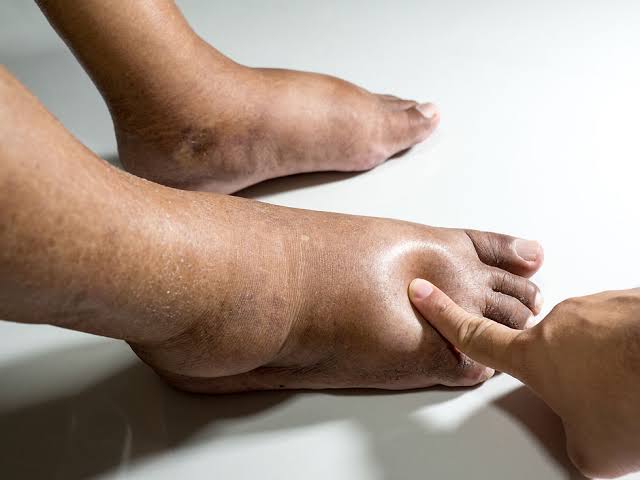
Noticing swelling in your legs? You’re not alone. Swollen legs are a common issue that many people experience especially as they get older or spend long hours on their feet. But while it might seem harmless at first, persistent or severe swelling can be a sign of an underlying health condition….CONTINUE READING>>>
Here are four common causes of swollen legs and what they could mean for your health.
1. Edema (Fluid Retention)
Causes:
- Standing or sitting for long periods
- Hot weather
- High salt intake
- Pregnancy
- Certain medications (e.g., blood pressure drugs, steroids)
Signs:
- Puffiness, especially around the ankles
- Skin that feels tight or stretched
- Indentation in the skin when pressed (pitting)
Tip: Elevating your legs and reducing salt in your diet can help mild edema. But chronic cases should be checked by a doctor.
2. Chronic Venous Insufficiency
This condition occurs when the valves in your leg veins become weak or damaged, making it harder for blood to return to the heart. As a result, blood pools in the legs, causing swelling.
Signs:
- Swelling that worsens throughout the day
- Varicose veins
- Achy, heavy, or tired legs
- Skin discoloration around the ankles
Note: Wearing compression stockings and exercising regularly can improve circulation. Severe cases may require medical treatment.
3. Heart, Kidney, or Liver Problems
Swelling in the legs can also be a sign of serious organ-related issues, particularly with the heart, kidneys, or liver. These organs help regulate fluid in the body — when they’re not functioning properly, fluid can build up in the lower limbs.
Signs to Watch:
- Swelling in both legs (often worse in the evening)
- Fatigue or shortness of breath
- Sudden weight gain
- Swelling in the abdomen or hands
If you notice these symptoms along with leg swelling, see a doctor immediately. These could be signs of congestive heart failure, kidney disease, or liver disease.
4. Blood Clots (Deep Vein Thrombosis – DVT)
Symptoms:
- Swelling in one leg (not both)
- Warmth and redness
- Pain or tenderness, especially in the calf
- Skin may appear discolored or tight
DVT can be life-threatening if the clot travels to the lungs. If you suspect it, go to the hospital immediately.
When Should You Be Concerned?
While minor swelling can be harmless, see a healthcare provider if you notice:
- Swelling that comes on suddenly
- Pain or redness in one leg
- Difficulty breathing
- Swelling with fever
- Skin changes (darkening, hardening, or sores)
Final Thoughts
Have you experienced leg swelling before? What helped you manage it? Share your story in the comments to support others.
